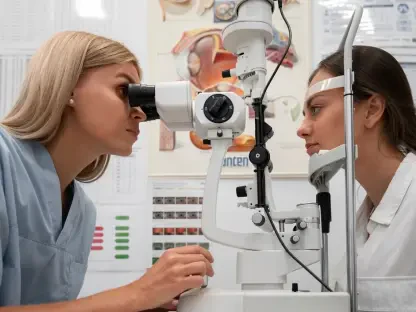Could a single drug approval redefine access to treatment for a rare, life-altering condition? In a landscape where high costs often limit hope for patients with familial chylomicronemia syndrome (FCS), Arrowhead Pharmaceuticals has ignited a spark of change with its FDA-approved RNAi drug, Redemplo. This breakthrough therapy, targeting a genetic disorder that affects thousands with debilitating symptoms, arrives not just as a medical innovation but as a potential market disruptor. With a pricing strategy that challenges industry norms, the stage is set for a seismic shift in how rare disease treatments are valued and delivered.
The significance of this development cannot be overstated. FCS, impacting around 6,500 individuals in the U.S., leaves patients grappling with dangerously high triglyceride levels and risks like acute pancreatitis, often with limited relief from strict diets. Until recently, therapeutic options remained scarce, making the entry of targeted genetic drugs a critical turning point. Arrowhead’s Redemplo, alongside competitor Ionis Pharmaceuticals’ Tryngolza, represents a new era for patient care—but it’s the bold pricing and strategic vision behind Redemplo that could reshape the entire FCS market. This story explores the science, the competition, and the broader implications for patients and payers alike.
A Game-Changer in Rare Disease Treatment: Why Now?
In an era where rare disease drugs often carry exorbitant price tags, Arrowhead Pharmaceuticals has taken a daring step with Redemplo, approved by the FDA for FCS. This RNAi-based therapy harnesses cutting-edge technology to silence specific genes, offering a novel approach to a condition that has long evaded effective management. What sets this moment apart is not just the science but the timing—patients and healthcare systems are increasingly vocal about the need for affordable innovation, creating a ripe environment for disruption.
The approval of Redemplo comes as a beacon of hope amid growing frustration over drug pricing. While many companies in the rare disease space justify high costs with the argument of small patient populations, Arrowhead’s strategy suggests a different path. By prioritizing accessibility, the company aims to address both the medical and economic barriers that have historically sidelined patients, potentially setting a precedent for how such therapies are brought to market.
This shift also reflects broader trends in genetic medicine, where advancements in RNAi and similar technologies are unlocking solutions for previously untreatable conditions. With Redemplo, the focus isn’t solely on clinical outcomes but on redefining value in healthcare. As payers and providers grapple with rising costs, the timing of this launch positions Arrowhead to challenge long-standing assumptions about pricing rare disease treatments.
The FCS Challenge: A Rare Disorder with Big Needs
FCS stands as a formidable adversary for those diagnosed, characterized by a genetic inability to metabolize triglycerides effectively. This results in blood levels so elevated that patients face constant fatigue, cognitive impairment, and severe abdominal pain. Beyond daily struggles, the looming threat of pancreatitis—a potentially fatal complication—adds urgency to finding better solutions than the restrictive low-fat diets that remain the standard of care.
For the estimated 6,500 affected individuals in the U.S., the burden extends beyond physical symptoms to emotional and financial tolls. Managing the condition often means navigating a maze of inadequate interventions, with many patients unable to prevent recurrent health crises. The lack of targeted therapies has left a significant gap, amplifying the desperation for treatments that address the root cause rather than merely mitigating effects.
Enter genetic therapies like Redemplo and Tryngolza, which offer a glimmer of progress by directly tackling the underlying mechanisms of FCS. These drugs signal a departure from temporary fixes, aiming to transform quality of life for patients who have long felt overlooked. Understanding this profound unmet need underscores why the introduction of such treatments—and the competitive dynamics surrounding them—holds immense weight for the healthcare ecosystem.
Breaking Down the Competition: Redemplo vs. Tryngolza
At the heart of the FCS treatment landscape lies a head-to-head battle between Arrowhead’s Redemplo and Ionis Pharmaceuticals’ Tryngolza, both designed to lower triglycerides by targeting the liver protein apoC-III. Redemplo, powered by RNAi technology, demonstrated a striking 59% median reduction in triglycerides by month 10 in Phase 3 trials, paired with a convenient dosing schedule of once every three months. Its safety profile also stands out, lacking major warnings or contraindications.
In contrast, Tryngolza, which relies on antisense oligonucleotides, requires monthly injections and comes with noted risks, including hypersensitivity reactions that led to some trial discontinuations. While effective in reducing triglycerides, its more frequent administration and safety concerns place it at a disadvantage for patient convenience and perception. These clinical differences alone paint a competitive picture, but the real game-changer emerges in the realm of cost.
Pricing reveals the starkest contrast: Redemplo’s annual wholesale cost is set at $60,000, a fraction of Tryngolza’s $595,000 price tag. This dramatic undercut by Arrowhead isn’t just a number—it’s a strategic move to redefine market expectations, potentially forcing competitors to rethink their approaches. With such disparities in both delivery and economics, Redemplo positions itself as a formidable contender to dominate market share among FCS patients and beyond.
Voices from the Field: Expert Insights and Market Reactions
Industry leaders and analysts are buzzing about the implications of Arrowhead’s entry into the FCS market. Chris Anzalone, CEO of Arrowhead Pharmaceuticals, has articulated the pricing of Redemplo as a deliberate choice to foster trust and broaden access, with an eye toward the much larger severe hypertriglyceridemia (SHTG) market affecting up to 3 million people. This long-term vision suggests a calculated gamble to build loyalty among patients and payers from the outset.
Financial experts echo the sentiment that execution will be key. Mani Foroohar from Leerink Partners emphasizes that while the low price of $60,000 annually is disruptive, success hinges on navigating payer negotiations and ensuring widespread reimbursement. The ability to translate affordability into actual access remains a critical hurdle, one that could determine whether this strategy reshapes the rare disease space or falters under logistical challenges.
Clinicians, meanwhile, are cautiously optimistic about the impact of both Redemplo and Tryngolza. Many highlight the potential to drastically reduce pancreatitis risk as a major win for patients, even as they acknowledge manageable side effects like headaches or injection site reactions with Redemplo. This feedback from the medical community points to a market on the cusp of transformation, where innovative therapies and competitive pricing could converge to elevate standards of care.
Navigating the Future: Strategies for Market Impact
As Arrowhead carves its path in the FCS arena, stakeholders must consider actionable steps to maximize the drug’s influence. Patient education stands as a priority—emphasizing Redemplo’s quarterly dosing and favorable safety profile can build trust within FCS communities. Clear communication about these advantages could drive adoption, especially among those weary of frequent treatments or adverse reactions associated with alternatives.
Engaging with payers early is another crucial tactic. Highlighting the cost-effectiveness of Redemplo’s $60,000 annual price compared to nearly tenfold costs from competitors offers a compelling case for streamlined reimbursement. Demonstrating long-term savings through reduced hospitalizations or complications could further solidify payer support, easing barriers for patients seeking access to this therapy.
Lastly, keeping a close watch on ongoing SHTG trials is essential. With both Arrowhead and Ionis targeting this indication—a market potentially affecting 1 million high-risk individuals—consistent pricing across indications could position Redemplo as a benchmark for affordability. If efficacy data remains strong, this approach might not only capture a larger audience but also challenge industry norms around drug valuation, paving the way for broader systemic change.
Looking back, the launch of Redemplo marked a pivotal moment in the fight against FCS, reflecting a rare blend of scientific progress and economic strategy. For patients, it offered a lifeline through effective treatment at a fraction of expected costs. For the industry, it posed a challenge to rethink pricing models in rare disease care. Moving forward, the focus turned toward ensuring access through robust payer partnerships and sustained patient outreach. Monitoring the expansion into SHTG became a critical next step, with the potential to amplify impact across millions. This journey, sparked by a single approval, held the promise of reshaping how innovation and affordability intersect in healthcare.









